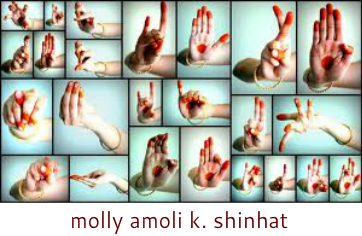Finders and Keepers
Canadian Museum of Nature
From the tiny jewel-like blue insects to a completely assembled giraffe skeleton, Finders and Keepers is like a deck from Noah's ark—well, the skeletal remains of what may've been left if Noah hadn't made it. Giant mineral chunks, tapeworms (in formaldehyde), wooly mammoth molars, great big bugs, feathers, conch, nautilus, and scallop shells, bones, stones, skeletons, stuffed mice...over 400 individual specimens spanning the museum's 150-year history make up this striking Victorian-style exhibit of our natural history collection.
It seethes with evidence of the glorious diversity of the living beings around us, today and in the past.
With the lion's share of creative work focusing on us—the human race—it's easy to forget or minimize nature's contribution to our civilizations. Aside from the almost cliché images of fruit and flowers, the use in every art form, including architecture and literature, of natural forms is immense, varied and enduring. Without the life around us, what would be the basis for the Great Sphinx at Giza? As we know it, it would never have existed. Along with Georgia O'Keefe's flower paintings and Herman Melville's Moby Dick, all these creative works required someone to look carefully at nature, to study it.
From South African writer Alex La Guma's use of the cockroach as a metaphor for life in a Cape Town ghetto to painter Botticelli's giant clamshell encasing an emerging Venus (Birth of Venus), nature stretches our imaginations and creativity into spaces we may never have known. From our earliest ancestors and their cave paintings, like an ancient distant relative, this connection goes back to our earliest days and connects us all—regardless even of the time in which we live.
With each large case divided into themes, instead of drawings and paintings, "Form, Fantasy, and Colour" showcases exquisite shells, flora and fauna above swathes of pale blue chiffon. Ornate silver frames hang inside the case next to the glass, "framing" the objects from a distance. Arranged as still-lives, Morag Hutcheson, the exhibit's developer, calls attention to how we look at nature. Gently, we are led to see—in truth, no human mediation is required. These objects, once part of living organisms, have their own intrinsic dignity, magnificence, and mystery.
A tribute to pack rats, famous Canadians who've contributed thousands of specimens are mentioned - and not just in name. One case includes old labels, collecting tins (including custard, headache pill and cigar containers) and hand-written notebooks.
The saying goes, "Finders keepers losers weepers". With our increasingly threatened environment, it's hardly fish and chips alone we stand to lose. Finders and Keepers is a testament to vanishing landscapes, real and imaginary, utterly founded on living beings. They had and those not extinct still have sources of beauty in worlds outside and beyond reproduction in Kodak bullet-proof colour or, once dead, storage in a jar of formaldehyde. If we want nature to continue to weave itself into our cultural tapestries as well as anything else, surely, we have to be our brothers' keepers.
Published in The Ottawa Xpress, 2000
It seethes with evidence of the glorious diversity of the living beings around us, today and in the past.
With the lion's share of creative work focusing on us—the human race—it's easy to forget or minimize nature's contribution to our civilizations. Aside from the almost cliché images of fruit and flowers, the use in every art form, including architecture and literature, of natural forms is immense, varied and enduring. Without the life around us, what would be the basis for the Great Sphinx at Giza? As we know it, it would never have existed. Along with Georgia O'Keefe's flower paintings and Herman Melville's Moby Dick, all these creative works required someone to look carefully at nature, to study it.
From South African writer Alex La Guma's use of the cockroach as a metaphor for life in a Cape Town ghetto to painter Botticelli's giant clamshell encasing an emerging Venus (Birth of Venus), nature stretches our imaginations and creativity into spaces we may never have known. From our earliest ancestors and their cave paintings, like an ancient distant relative, this connection goes back to our earliest days and connects us all—regardless even of the time in which we live.
With each large case divided into themes, instead of drawings and paintings, "Form, Fantasy, and Colour" showcases exquisite shells, flora and fauna above swathes of pale blue chiffon. Ornate silver frames hang inside the case next to the glass, "framing" the objects from a distance. Arranged as still-lives, Morag Hutcheson, the exhibit's developer, calls attention to how we look at nature. Gently, we are led to see—in truth, no human mediation is required. These objects, once part of living organisms, have their own intrinsic dignity, magnificence, and mystery.
A tribute to pack rats, famous Canadians who've contributed thousands of specimens are mentioned - and not just in name. One case includes old labels, collecting tins (including custard, headache pill and cigar containers) and hand-written notebooks.
The saying goes, "Finders keepers losers weepers". With our increasingly threatened environment, it's hardly fish and chips alone we stand to lose. Finders and Keepers is a testament to vanishing landscapes, real and imaginary, utterly founded on living beings. They had and those not extinct still have sources of beauty in worlds outside and beyond reproduction in Kodak bullet-proof colour or, once dead, storage in a jar of formaldehyde. If we want nature to continue to weave itself into our cultural tapestries as well as anything else, surely, we have to be our brothers' keepers.
Published in The Ottawa Xpress, 2000

